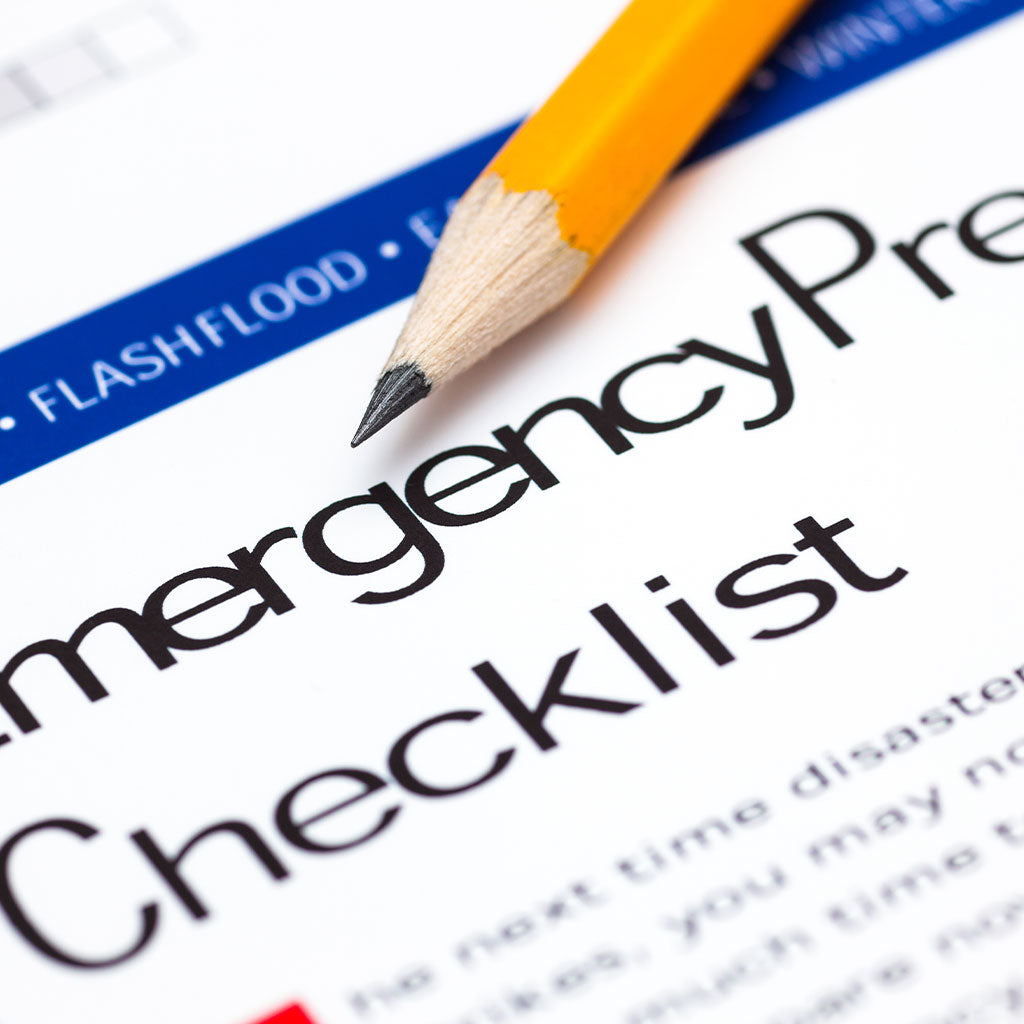Inspired for an Adventure? Check out Beef Stroganoff - Pouch and Beef Stew - Pouch
Free Ground Shipping On All Orders
Over 2,100 Reviews
Add description, images, menus and links to your mega menu
A column with no settings can be used as a spacer
Link to your collections, sales and even external links
Add up to five columns
Add description, images, menus and links to your mega menu
A column with no settings can be used as a spacer
Link to your collections, sales and even external links
Add up to five columns


The unexpected can come a-knockin’ at any time: a bad storm, a grid breakdown, a flood- or fire- or other weather-triggered evacuation. Yet many of us are a bit blasé when it comes to prepping ourselves for such derailing emergencies, even as we take the responsible steps to pack backup and safety supplies on our hiking and camping trips.
Or maybe you’re on top of disaster preparedness when it comes to your domestic space, but you haven’t really considered the possibility that the SHTF situation might occur when you’re away from home, at work or on your commute. That’s another common oversight.
With this in mind, we wanted to pull together some basics on prepping: at home, at work, and in your vehicle. In doing so, we’ll be linking to many other great resources on urban and suburban prepping—including a few of our previous Mountain House blog posts on the subject.
The Emergency Kit—or, Rather, Emergency Kits
One of the fundamental steps to prepping is assembling a basic emergency kit: a resource that goes by numerous other names, including 72-hour kit, disaster supply kit, disaster preparedness kit, and—in reference to specialized forms—get-home and bug-out bags.
One emergency kit isn’t sufficient, as we alluded to in the intro: You need one at home, of course, but you also want one stored in your vehicle and at your workplace—anywhere you spend large amounts of your time on a regular basis.
We’ve put together a few infographics on disaster preparedness kits that boil down the essentials, and we also certainly encourage you to study the more detailed instructions posted over at Ready.gov. But let’s run through the basics:
You want at least 72 hours’ (aka three days’) worth of food on hand—preferably more. Because they’ve got such a long shelf life—the longest in the industry, in fact—Mountain House meals serve admirably as emergency food supplies; we even sell kits specifically for that purpose!
We’ve written some primers on emergency food storage here at the Mountain House blog, including one that helps you calculate an estimate of how much to put aside based on your family size and energetic needs.
You also want at least a three-day supply of water, which means a minimum of a gallon per person per day. This is for drinking, obviously, but also for sanitary purposes. (Incidentally, the Mountain House blog has also previously shared some tips on boiling water—for sterilization and cooking purposes—during a power outage.)
Other fundamentals of the emergency kit include:
- a hand-crank radio/NOAA weather radio (and/or a battery-operated unit with extra batteries)
- flashlights and headlamps (plus extra batteries)
- warm clothes and blankets
- any prescriptions or other necessary medications
- a wrench or set of pliers for shutting off the gas supply (if applicable)
- a pair of needle-nose pliers or a multi-purpose tool
- garbage bags, ties, and moist towelettes
- maps of your neighborhood and local area
- a dusk mask
- a charged cellphone with a charger and extra battery
- a bit of cash or traveler’s checks
From fire-starting materials to books and games for bored, hunkered-down kiddos, there are plenty of other items useful to stash in your emergency kit, more than a few of which come down directly to specific personal needs and preferences. So, again, study the kit-building FAQs over at Ready.gov and spend some time compiling your own customized list—and definitely don’t forget your pets!
Vehicle Survival Kit
Some version of the above emergency kit is good to have on hand in your go-to “bug out vehicle,” but you also need some standard auto-maintenance/repair items as well. (Hopefully these are already at the ready in your car, but…) At a minimum, these should include vital automotive fluids (motor oil, coolant, brake fluid, etc.), a set of jumper cables, a spare tire, a jack and jack stands, a lug wrench, and emergency flares and/or reflectors.
Keeping a full gas tank and/or carrying extra fuel and generally making sure your car is in good working order (with regular inspections of its basic systems) are also part and parcel of disaster preparedness, in case you’re caught in a SHTF situation on the road or you need to evacuate.
Workplace Survival Kit/Get Home Bag
Besides the basic 72-hour kit components, you may want your workplace survival supplies to include any necessary tools for evacuating that workplace and going home. (It goes without saying that evacuating may not always be the safest option.) This may take the form of a specialized kit often called a bug-out bag, which depending on your specific situation could include tennis/running shoes for the journey home as well as a detailed and up-to-date map of your city or town for charting the best course and coming up with detours if necessary.
Our Mountain House post on “How to be an Urban Prepper” includes more information on get-home bags as well as “bug-out bags”: those meant to sustain you in case you can’t go home or stay home and need instead to “bug out” to a more secure refuge. (Our former Mountain House Ambassadors shared the contents of their own personal bug-out bags to educate others: Take a look!)
Emergency Plans
Besides outfitting your home, workplace, and vehicle(s) with disaster preparedness kits, you, your family, and your workmates should develop a disaster-response plan for home and office. This includes defining evacuation routes, identifying safe spaces at home or at work (for example, the proper refuge during an earthquake), and compiling a list of emergency contacts and agreeing on a communication protocol. (Ready.gov has more info on making emergency plans.)
Storm Shelters at Home
If you live in an area vulnerable to hurricanes, tornadoes, or other particularly severe weather, you may want to install a reinforced storm shelter or safe room in your house as part of your prepper home security actions. We published a blog post on this topic worth checking out, if so.
More Prepping Resources
Once again, we direct you to Ready.gov for detailed and easy-to-understand disaster preparedness information. The Red Cross is another great prepping resource.
We also have some other useful Mountain House blogposts on prepping and survival topics besides those linked to above. They include:
- tips on prepping on budget
- tips on prepping in limited space
- planning ahead for a long-term power outage
- more advice on emergency preparedness outside the home
- tips on preparing for floods and for wildfires
And don’t forget our roundup of 20 survival/prepping tips directly from some of our Mountain House experts, full of great insights into planning for disasters as well as getting by in the wilderness!


How to Rotate Emergency Food: FIFO and Other Rotation Methods

The First 72 Is on You: Survival Kit Checklist + Printable PDF


Stay Hungry for Adventure
Sign Up for Delicious Outdoor Meals & Exclusive Offers!
By clicking ‘Join Now’, I agree to the Terms of Service and Privacy Policy.


Join the adventure
©2025 Mountain House — All Rights Reserved.
Your Cart is Empty
Continue ShoppingYour Cart
Subtotal
$0.00
EXPRESS PAYMENT METHODS AVAILABLE IN CHECKOUT
Taxes and Shipping Calculated at Checkout
Your ExpertVoice deal.
$[Deal Price]
$[Original Price]
Discount applied at checkout.
On sale now — lower than your ExpertVoice discount.
Not eligible for ExpertVoice discount.
















